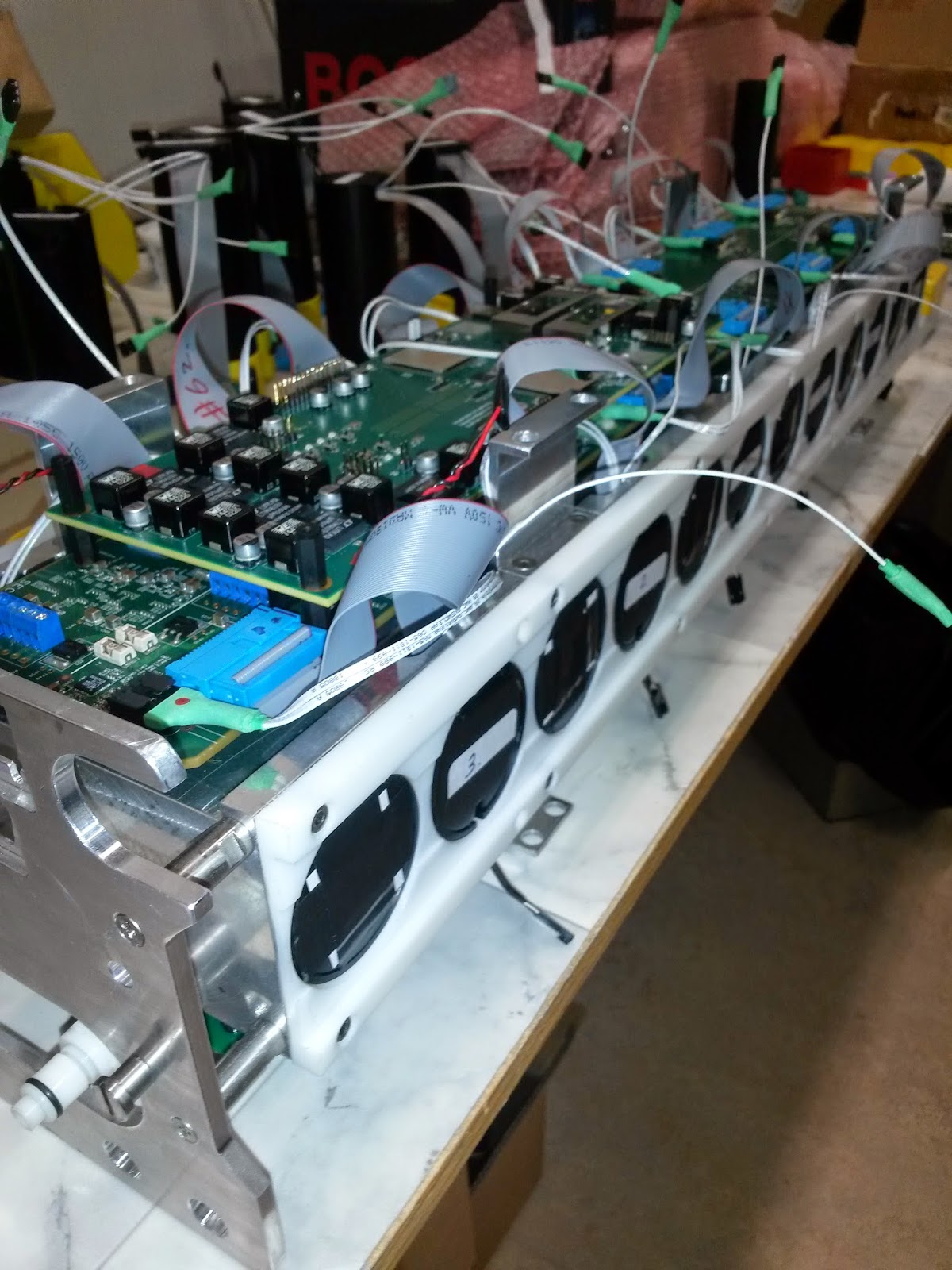In May this year I moved to CERN in Switzerland for 3 months
as part of my studies at University of the Witwatersrand. I have since joined
the ATLAS Tile Calorimeter Demonstrator project Group and been helping out
where I can. Their aim has been to design, build and install a Hybrid Demonstrator
prototype that will replace the aging front-end electronics from 1 to 3 slices of the ATLAS
TileCal before RUN 2 begins in 2015.
The entire LHC is in the process of being upgraded, by 2024
Phase II will begin where the beam energy will be increased to √s = 14 TeV and particle
luminosity by a factor of 5. This will potentially address the unsolved mysteries
such as dark matter. The demonstrator system needs to be fully compatible with
current detector electronics as well as act as a validation for the new
read-out architecture (Hybrid Design). Once fully upgraded the data output from the ATLAS TileCal will increase by 200 times to estimated 40 Tb/s!!
Earlier this month CERN had its second TileCal expert week
of the year. Experts from
around the world came together to help with the build of the first fully
assembled Hybrid Demonstrator “Superdraw” prototype. A superdraw is composed
4 separate “minidraws” each that are
independent in terms of power, readout and configuration. A total of 45
PMTs, 4 Motherboards, 4 High voltage Cards and 4 Daughter boards were needed to
be assembled and connected together. The week was very successful with many new
problems being identified as well as confirmation that all the components
fitted together correctly and that the entire draw was able to fit in a slice
of TileCal. Below are a few photos from that weeks assembly.
Fully Assembled Minidraw.
Demonstrator Superdraw ready for testing.
Insertion of the Draw into a Test Slice of the TileCal.


























